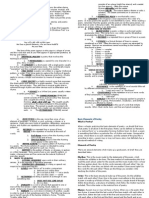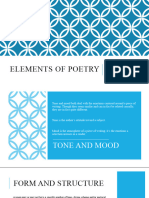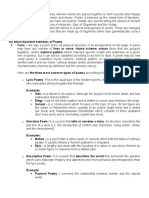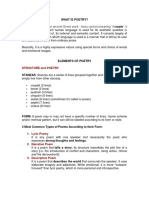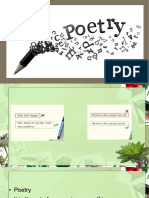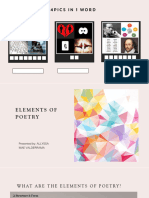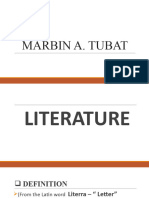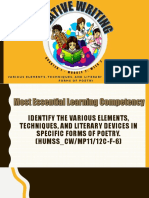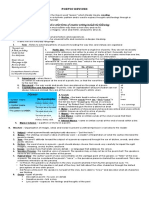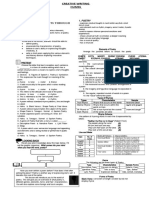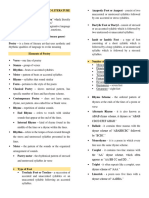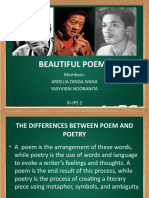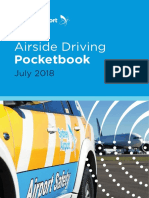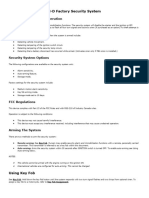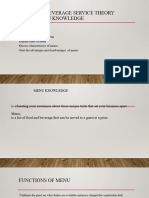0% found this document useful (0 votes)
93 views11 pagesPoetry Unit Notes - Lit/Comp 09 Poetry
This document provides an overview of key concepts for analyzing poetry, including defining the major genres of poetry, examining the form and structure of poems, identifying common literary devices, and understanding how to interpret themes. Some of the main elements discussed are analyzing the form, imagery, figurative language, sound devices, and theme of a poem. Common poetic forms outlined include sonnets, odes, ballads, and free verse. Literary techniques like rhyme, metaphor, and personification are also explained.
Uploaded by
Pam ChildressCopyright
© © All Rights Reserved
We take content rights seriously. If you suspect this is your content, claim it here.
Available Formats
Download as RTF, PDF, TXT or read online on Scribd
0% found this document useful (0 votes)
93 views11 pagesPoetry Unit Notes - Lit/Comp 09 Poetry
This document provides an overview of key concepts for analyzing poetry, including defining the major genres of poetry, examining the form and structure of poems, identifying common literary devices, and understanding how to interpret themes. Some of the main elements discussed are analyzing the form, imagery, figurative language, sound devices, and theme of a poem. Common poetic forms outlined include sonnets, odes, ballads, and free verse. Literary techniques like rhyme, metaphor, and personification are also explained.
Uploaded by
Pam ChildressCopyright
© © All Rights Reserved
We take content rights seriously. If you suspect this is your content, claim it here.
Available Formats
Download as RTF, PDF, TXT or read online on Scribd
/ 11




